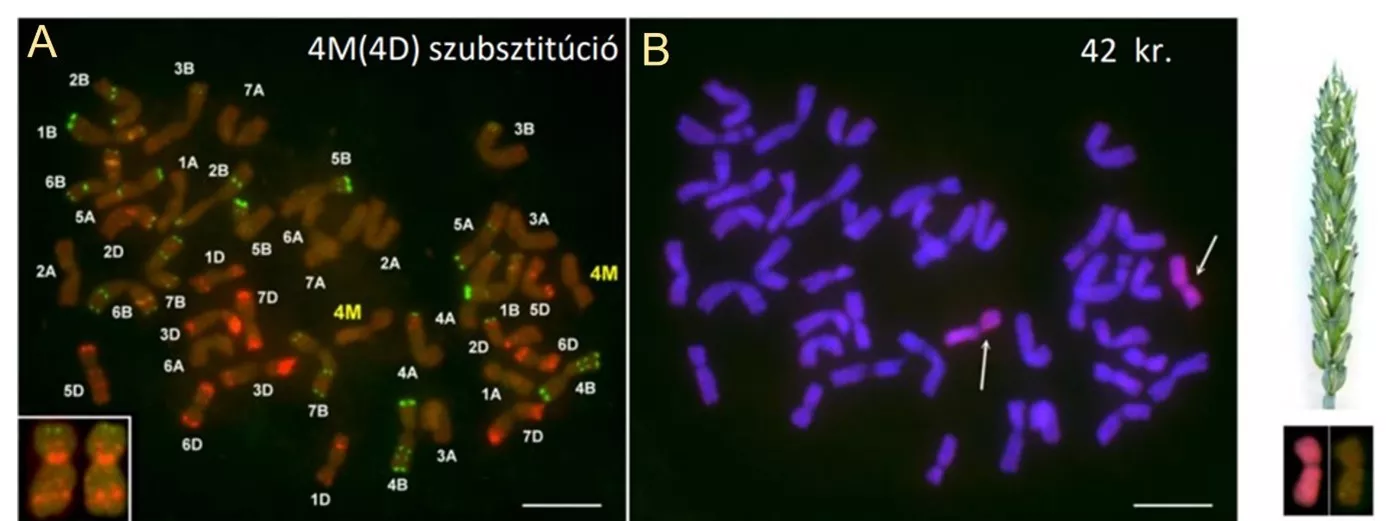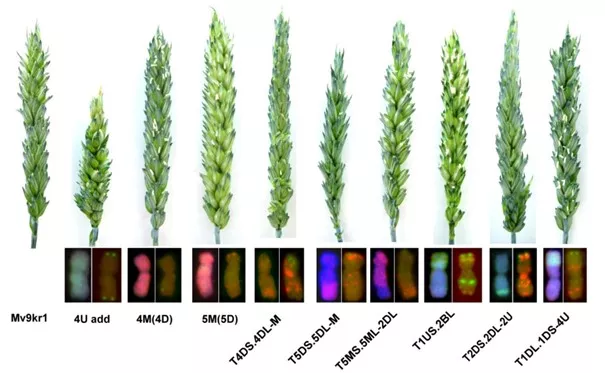Researchers from the Agricultural Institute of the HUN-REN Centre for Agricultural Research (HUN-REN CAR), in collaboration with colleagues from the Olomouc Institute of Experimental Botany (Czech Republic), have developed a new marker-assisted selection system by designing gene-specific molecular markers. This system enables the more effective utilisation of gene bank resources of the wheat-relative goatgrass (Aegilops biuncialis) in wheat breeding. Through the combination of the marker-assisted selection system and molecular cytogenetic methods, the researchers selected numerous valuable wheat lines, each carrying a chromosome or segment of Ae. biuncialis. The paper presenting the results was published in the prestigious journal Scientific Reports.
The Genetic Resources Group of the Department of Biological Resources at HUN-REN CAR MGI, led by István Molnár, has been conducting research for over 20 years with the main goal of producing breeding materials for wheat breeding through inter-specific crosses. The aim is to improve quality parameters, stress adaptation, and yield through the genetic variability within the wheat genetic circle. Wild wheat-related species are increasingly recognised as valuable gene sources, yet the genetic diversity they carry remains largely untapped. Aegilops biuncialis, belonging to the goatgrass family, displays numerous beneficial traits, including resistance to leaf and stem rust, heat, drought, and salt tolerance, as well as high levels of micronutrients and dietary fibres.
Until now, the group conducted the selection of progeny lines resulting from crosses between wheat and Ae. biuncialis using primarily molecular cytogenetic methods that are hard to apply for examining larger pre-breeding populations. The development of new gene-based molecular markers was enabled by the previously isolated chromosome sequence data from diploid ancestors of the Aegilops biuncialis – Ae. umbellulata and Ae. comosa ‒ carrying its U and M genomes. The research group also participated in determining the chromosome sequence data.
In the current publication, three marker development strategies were employed, involving the development of EST (Expressed Sequence Tag), IT (Intron-targeting), and cDNA-based markers. Out of 482 markers tested on wheat and Aegilops genotypes as crossing partners, the chromosomal localisation of 126 markers was successfully determined using wheat/Aegilops addition lines. Through the selection system containing 32 markers, the presence of Ae. biuncialis chromosomes became traceable in a pre-breeding population consisting of 44 wheat/Aegilops hybrid derivatives. The researchers identified several new wheat/Ae. biuncialis introgression lines through the combined application of gene-specific markers and cytogenetic methods. The multiplication, agronomic evaluation, and incorporation of lines carrying valuable traits into wheat breeding are expected in the coming years.

Identification of the chromosomal composition of wheat/Aegilops biuncialis substitution lines using fluorescence in situ hybridisation. The identification of mitotic chromosomes was based on the patterns of visualised repetitive DNA probes in different colours (Afa: red, pSc119.2: green, 45S rDNA: orange) (A). Enlarged view shows the FISH pattern of the missing 4D chromosomes. Using genomic in situ hybridisation, the 4M Ae. biuncialis chromosome (red, arrows) can be detected alongside wheat chromosomes (blue) in the substitution line with 42 chromosomes (B). On the right side of the figure, the spike of the substitution line is visible, showing Aegilops chromosomes with GISH and FISH patterns. (photo: András Farkas)

Wheat/Aegilops biuncialis progeny lines containing different chromosomes exhibit distinct spike morphology compared to the Mv9kr1 wheat parent spike. (photo: András Farkas).